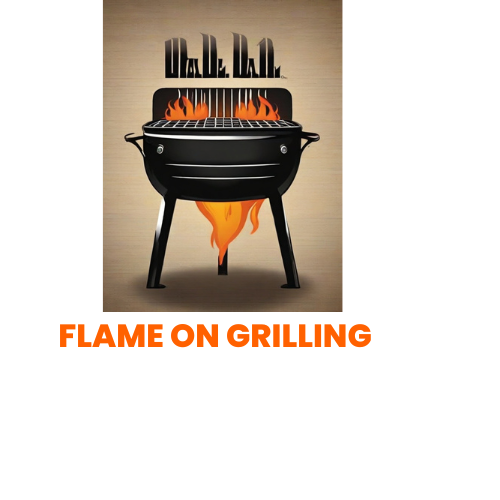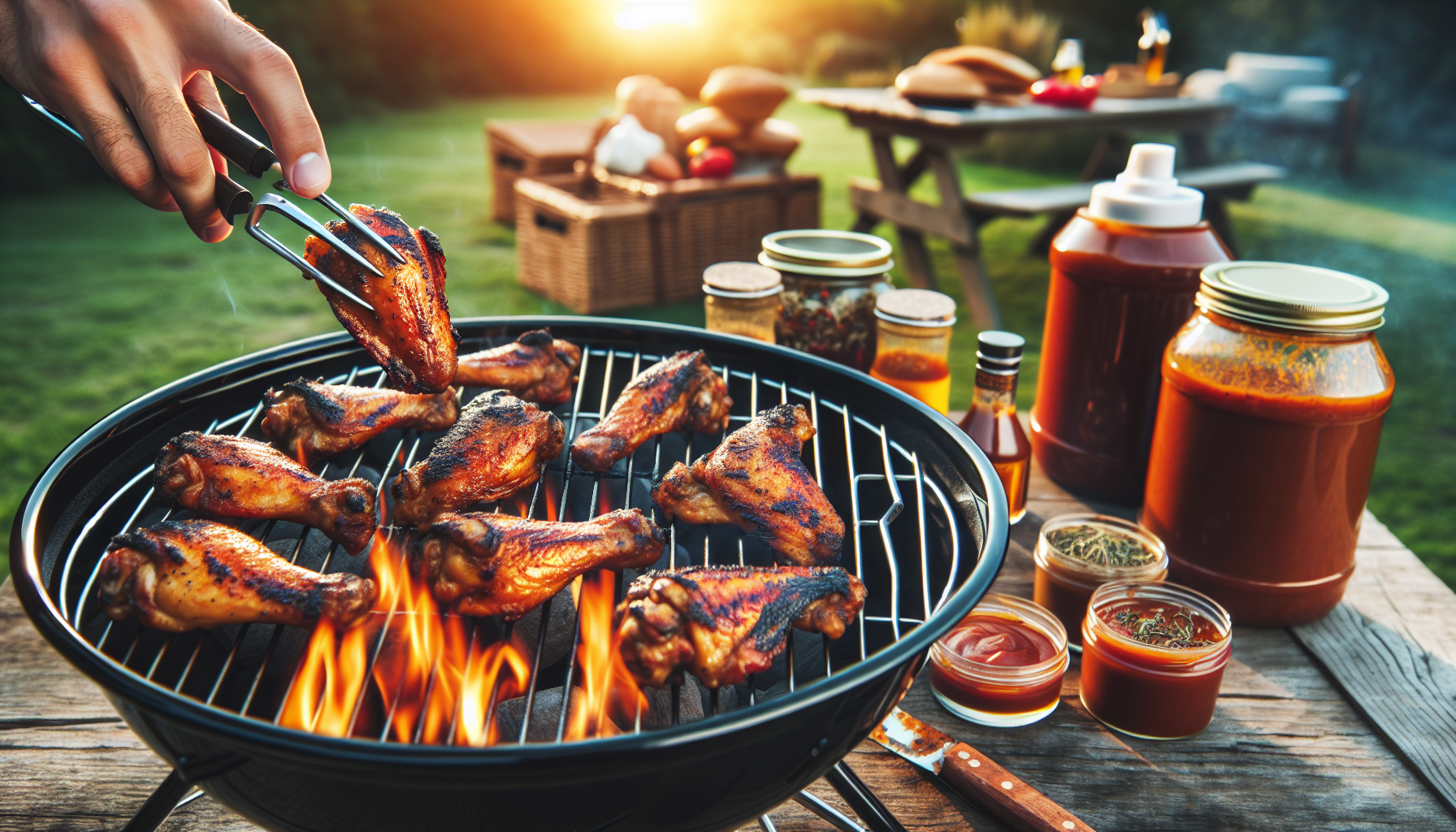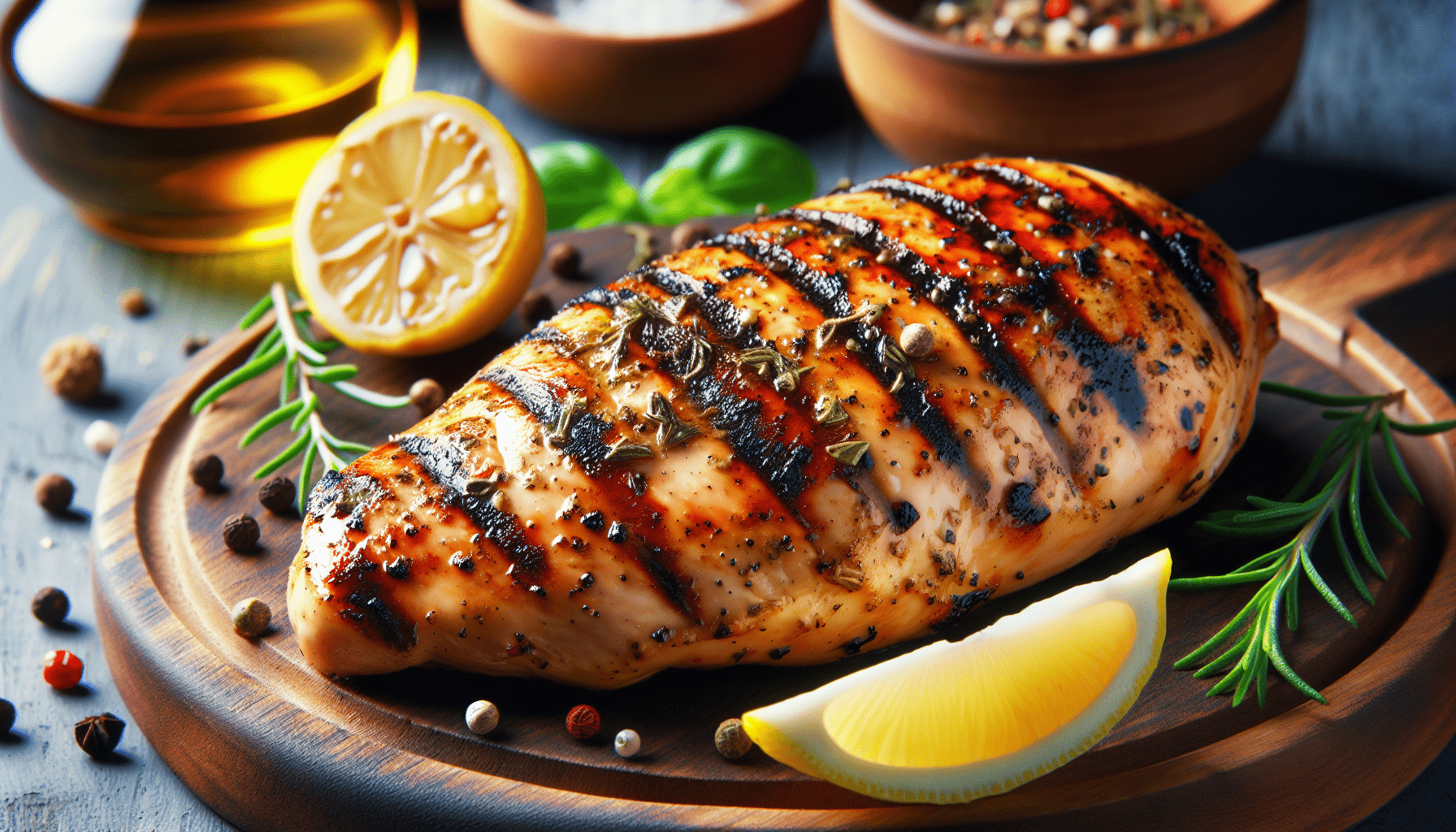Grilling chicken wings is a mouthwatering delight, but getting the timing just right can sometimes be a challenge. Whether you’re hosting a backyard BBQ or simply craving a delectable snack, knowing how long it takes to grill chicken wings is essential. From achieving the perfect crispy exterior to ensuring juicy, tender meat, this article will guide you through the process, sharing tips and tricks to guarantee finger-licking results every time. So, grab your tongs, fire up the grill, and let’s get cooking!
Factors Affecting Grilling Time
Grilling chicken wings to perfection requires considering various factors that can affect the cooking time. Paying attention to these factors will ensure that your wings are cooked thoroughly and deliciously.
Size and Thickness of the Chicken Wings
The size and thickness of the chicken wings play a significant role in determining the grilling time. Smaller wings will cook faster than larger ones, while thicker wings will take longer to cook through. To achieve even cooking, it is essential to separate the wings into similar sizes and thicknesses before grilling.
Temperature of the Grill
The temperature of the grill is another crucial factor in determining the grilling time. The grill should be preheated to the appropriate temperature before placing the chicken wings on the grates. A higher heat will result in faster cooking, while a lower heat will require a longer cooking time. Maintaining a consistent grill temperature throughout the cooking process is important for evenly grilled wings.
Type of Grill Used
The type of grill you use can also impact the grilling time. Gas grills and charcoal grills may have different heat distributions and cooking speeds. Gas grills tend to provide more precise temperature control, while charcoal grills offer a distinct smoky flavor. Understanding your grill’s characteristics will help you gauge the grilling time more accurately.
Direct vs. Indirect Grilling
The grilling method you choose, whether direct or indirect, will also affect the cooking time. In direct grilling, the wings are placed directly over the heat source, resulting in faster and more intense cooking. Indirect grilling involves cooking the wings away from the direct heat, creating a slower and gentler cooking process. The method you select will depend on the desired outcome and the time you have available.
Starting Temperature of the Chicken Wings
The starting temperature of the chicken wings can impact the grilling time as well. If the wings are chilled or partially frozen, they will require a longer cooking time to reach the desired internal temperature. It is recommended to let the wings come to room temperature before grilling to ensure more even and efficient cooking.
Preparing Chicken Wings for Grilling
Properly preparing the chicken wings before grilling is essential for achieving juicy and flavorful results. Taking the time to thaw frozen wings, brine or marinate them, trim and season them, and preheat the grill will enhance the overall grilling experience.
Thawing Frozen Chicken Wings
If using frozen wings, it is crucial to thaw them thoroughly before grilling. Thawing the wings in the refrigerator overnight is the safest way to do so. Avoid thawing them at room temperature, as it can promote bacterial growth and compromise food safety. Once fully thawed, pat the wings dry with a paper towel before proceeding with seasoning and grilling.
Brining or Marinating the Chicken Wings
Brining or marinating the chicken wings can add incredible flavor and moisture to the meat. Brining involves soaking the wings in a saltwater solution for a few hours before grilling, while marinating involves coating the wings with a flavorful mixture and letting them sit for a specified period. Both methods infuse the wings with delicious flavors and help prevent them from drying out during the grilling process.
Trimming and Seasoning the Wings
Before grilling, it is recommended to trim any excess fat or loose skin from the wings. This can help prevent flare-ups and ensure even cooking. Once trimmed, season the wings generously with your preferred dry rub or marinade. Popular seasoning options include garlic powder, paprika, cayenne pepper, salt, and black pepper. Allow the wings to sit for a few minutes to absorb the flavors before grilling.
Preheating the Grill
Before placing the chicken wings on the grill, it is important to preheat it to the desired temperature. Preheating ensures that the wings cook evenly and prevents sticking to the grates. Allow the grill to heat up for about 10-15 minutes before placing the wings on the grates for direct or indirect grilling.
Direct Grilling Method
Direct grilling is a popular method for grilling chicken wings, providing a quick and intense cooking process. Follow these steps to achieve deliciously grilled wings using the direct grilling method.
Preheating the Grill for Direct Grilling
To prepare the grill for direct grilling, preheat it to medium-high heat, around 375-450°F (190-230°C). This temperature range allows for efficient cooking without risking burning the wings. Allow the grill to reach the desired temperature before proceeding.
Grilling Chicken Wings on Direct Heat
Once the grill is preheated, place the seasoned chicken wings directly over the heat source. Arrange them in a single layer, leaving enough space between each wing to promote even cooking. Closing the grill lid helps maintain the heat and ensures faster cooking.
Flipping the Wings Midway
After a few minutes of grilling, typically around 3-5 minutes, it’s time to flip the wings. Using a pair of tongs, carefully turn each wing over to cook the other side. Flipping the wings midway ensures that both sides are evenly browned and cooked to perfection.
Determining Doneness
To determine the doneness of the chicken wings, you can use a meat thermometer. Insert the thermometer into the thickest part of a wing without touching the bone. The internal temperature should reach at least 165°F (74°C) for safe consumption. Alternatively, you can check for visual cues such as the wings’ golden brown color and the juices running clear when pierced with a fork.
Indirect Grilling Method
Indirect grilling provides a slower and gentler cooking process for chicken wings. This method is ideal for achieving tender and juicy results with a hint of smoky flavor. Follow these steps to grill wings using the indirect grilling method.
Setting up the Grill for Indirect Grilling
To set up the grill for indirect grilling, you’ll need a two-zone fire. For gas grills, preheat one side to medium-high heat and leave the other side unlit. For charcoal grills, arrange the hot coals on one side of the grill and leave the other side empty. Placing a drip pan filled with water under the grates on the unlit side can help maintain moisture and prevent flare-ups.
Grilling Chicken Wings on Indirect Heat
Once the grill is set up for indirect grilling, place the seasoned chicken wings on the unlit side of the grill. Close the grill lid to trap the heat and smoke, allowing the wings to cook gently. This method requires a longer cooking time compared to direct grilling but results in moist and flavorful chicken wings.
Flipping the Wings Midway
Similar to the direct grilling method, it is important to flip the wings midway through the cooking process. Carefully turn each wing over using tongs to ensure even browning on both sides. This helps ensure even cooking and enhances the wings’ taste and texture.
Determining Doneness
To determine the doneness of the chicken wings, use a meat thermometer or look for visual cues. The internal temperature should read at least 165°F (74°C) for safe consumption. Additionally, the wings should have a golden brown color and clear juices when pierced with a fork.
Grilling Time for Different Chicken Wing Sizes
The cooking time for chicken wings can vary depending on their size. Here are approximate grilling times for small, medium, and large-sized wings:
Small-sized Chicken Wings
Small chicken wings, often referred to as wingettes, typically take around 15-20 minutes to grill. Remember to adjust the grilling time based on the factors discussed earlier to ensure the wings are fully cooked and safe to eat.
Medium-sized Chicken Wings
Medium-sized chicken wings, including both the wingette and drumette, generally require 20-25 minutes of grilling time. Monitor the wings closely and adjust the cooking time as needed to achieve the desired level of doneness.
Large-sized Chicken Wings
Large chicken wings may take slightly longer to cook, averaging 25-30 minutes. As with all sizes, it is essential to check the internal temperature or visual cues to ensure the wings are cooked through and safe to consume.
Ideal Internal Temperature
To ensure that your chicken wings are safe to eat and have reached the desired level of doneness, it is important to monitor their internal temperature. The ideal internal temperature will depend on safety guidelines and personal preferences.
Safe Minimum Internal Temperature
The safe minimum internal temperature for chicken wings, as recommended by the USDA, is 165°F (74°C). At this temperature, any harmful bacteria present in the meat are killed, ensuring the wings are safe to consume. It is crucial to use a meat thermometer to accurately measure the internal temperature before serving.
Recommended Internal Temperature
While the safe minimum internal temperature is 165°F (74°C), some individuals prefer their chicken wings to be more tender and juicy. In this case, you can remove the wings from the grill once they reach an internal temperature of 160°F (71°C). The residual heat will carry over and continue cooking while the wings rest, reaching the safe minimum temperature.
Using a Meat Thermometer
Using a meat thermometer is the most accurate way to gauge the internal temperature of chicken wings. Insert the probe into the thickest part of the wing without touching the bone. Ensure the thermometer is not inserted too close to the grill’s heat source, as it may give an inaccurate reading. Instant-read thermometers or wireless meat thermometers are practical tools for monitoring the internal temperature without constantly opening the grill lid.
Tips for Juicy and Flavorful Chicken Wings
Achieving the juiciest and most flavorful chicken wings involves more than just the grilling technique. Consider these tips to elevate your wing game:
Brining or Marinating the Wings
Brining or marinating the chicken wings before grilling adds essential flavors and helps retain moisture. Brining with a saltwater solution will not only enhance the taste but also contribute to more succulent meat. Marinating the wings in a flavorful mixture of herbs, spices, and oil can infuse fantastic flavors throughout the meat.
Avoiding Excessive Flipping and Poking
Excessive flipping and poking of the chicken wings can lead to moisture loss and uneven cooking. Resist the temptation to constantly turn the wings, as this interrupts the cooking process. Allow them to cook undisturbed for a few minutes on each side before flipping. Similarly, avoid poking the wings with a fork or knife, as it can cause the juices to escape, resulting in drier meat.
Using a Sauce for Basting
Basting the chicken wings with a delicious sauce while grilling can add an extra layer of flavor. Whether it’s barbecue sauce, buffalo sauce, or teriyaki glaze, applying the sauce throughout the cooking process will infuse the wings with incredible taste. Be mindful of the sugar content in the sauce, as excessive sugar can cause the wings to burn quickly. Brush the sauce on during the final minutes of grilling to prevent burning and promote caramelization.
Resting the Wings Before Serving
Resting the chicken wings for a few minutes after grilling allows the juices to redistribute within the meat, resulting in more tender and flavorful wings. Place the grilled wings on a plate or platter, tent them with aluminum foil, and let them rest for about 5 minutes. This short resting period will ensure the best possible taste and texture when you bite into those wings.
Common Mistakes to Avoid
To ensure a successful grilling experience, here are some common mistakes you should avoid when grilling chicken wings:
Grilling Chicken Wings Straight from the Refrigerator
Grilling chicken wings straight from the refrigerator can result in uneven cooking. Allow the wings to come to room temperature for about 15-30 minutes before placing them on the grill. This will help ensure that they cook evenly and minimize the risk of burning the wings’ surface while waiting for the center to cook through.
Using Very High Heat Throughout
Using excessively high heat throughout the grilling process can lead to charred outsides and undercooked interiors. While initial high heat can help sear the wings and create a flavorful crust, reducing the heat or moving the wings to indirect heat allows for more gentle and even cooking. Adjusting the heat as needed will prevent the wings from burning and ensure consistent doneness.
Overcooking the Wings
Overcooking the chicken wings is a common mistake that can result in dry and tough meat. Follow the recommended grilling times and monitor the internal temperature using a meat thermometer. Remember that the wings will continue to cook slightly once removed from the grill, so consider removing them when they are slightly under the desired doneness.
Not Monitoring the Grill Temperature
Neglecting to monitor the grill temperature can lead to unpredictable cooking results. Fluctuations in temperature can affect the cooking time and the wings’ overall quality. Use a grill thermometer to keep track of the heat and make any necessary adjustments. This will help ensure consistent and successful grilling outcomes.
Recipes and Variations
Now that you are familiar with the factors affecting grilling time, preparation techniques, grilling methods, and tips, it’s time to explore different chicken wing recipes and variations. Let your taste buds embark on a flavorful journey with these delicious recipes:
Classic Barbecue Chicken Wings
For the classic barbecue taste, coat the chicken wings with your favorite barbecue sauce and grill them to perfection. Baste the wings with additional sauce during the grilling process for an extra flavor punch. Serve with coleslaw and cornbread for an irresistible meal.
Spicy Buffalo Wings
If you crave heat and bold flavors, buffalo wings are an excellent choice. Toss the grilled wings in a mixture of hot sauce and melted butter to achieve the iconic buffalo wing taste. Serve with celery sticks and blue cheese or ranch dressing for a fantastic snack or appetizer.
Honey-Glazed Grilled Wings
For a touch of sweetness, honey-glazed grilled wings are a crowd-pleasing option. Brush the wings with a mixture of honey, soy sauce, garlic, and ginger before grilling. The glaze caramelizes beautifully on the grill, creating sticky and irresistible wings.
Asian-Inspired Teriyaki Wings
Transport your taste buds to the Far East with tender and flavorful teriyaki wings. Marinate the wings in a homemade or store-bought teriyaki sauce before grilling. The wings will absorb the savory and sweet flavors, resulting in a delightful umami experience.
Conclusion
Grilling chicken wings can be a fun and rewarding culinary adventure. By considering factors such as size and thickness, grill temperature, grilling methods, and internal temperature, you can achieve perfectly grilled wings to suit your preferences. Preparing the wings properly, seasoning them, and using different cooking techniques will elevate the taste and texture. Remember to avoid common mistakes and experiment with various recipes and flavors to find your personal favorites. So fire up the grill, get those wings ready, and enjoy the finger-licking deliciousness that awaits. Happy grilling!




